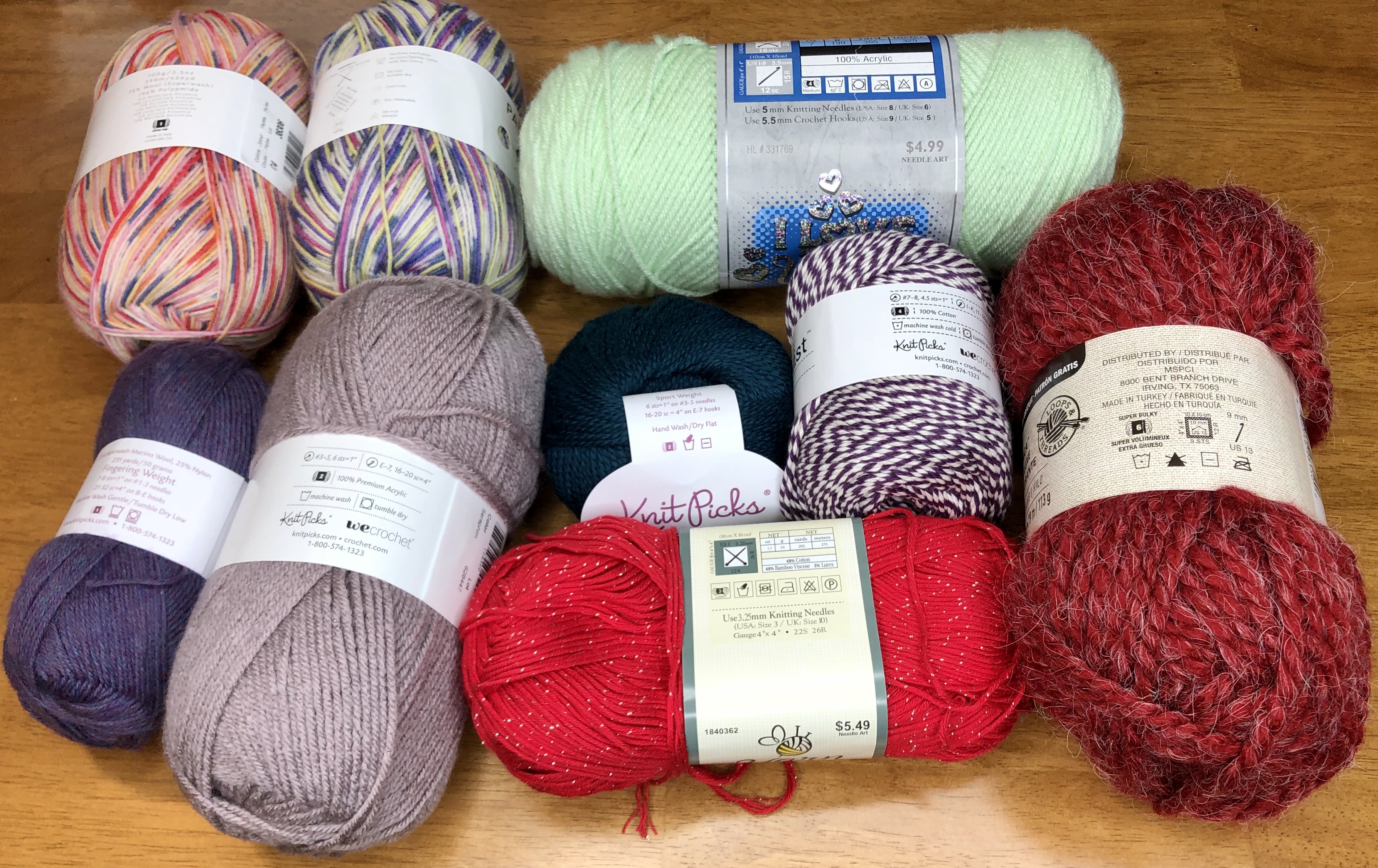After years of crocheting everything under the sun, I decided that I wanted to learn how to knit. So, I did what any reasonable person would do and started with…a sweater. Not a simple scarf, a full blown, long sleeved sweater. I had a nice, simple pattern picked out with no cables or anything super fancy and some lovely squishy yarn that would be sure to knit up the coziest sweater ever. I followed the instructions to the letter, measuring the length so that it was perfect for my short torso. And, when I tried on the finished sweater, it was wide enough for about 3 of me! Ok, maybe one and a half of me, but you get the idea. This was before the days of smart phones with cameras, so I don’t actually have a picture of this fabulous sweater, otherwise I would share it here as proof.
So, what went wrong?
Remember that super squishy yarn I picked out to make the coziest sweater ever? Yeah, it was the wrong weight of yarn for the pattern. I was using a bulky weight yarn for a worsted weight pattern. And that’s how it ended up being way to wide. The only reason the length was correct is because I used my handy dandy tape measure along with holding up the pieces to my body as I went to make sure the length was correct. If I would have actually knitted a gauge swatch (the only step I skipped in the pattern), I would have known that my yarn and needle combination was going to make the wrong size sweater.
How do you avoid making this mistake?
Always check the weight of the yarn you are purchasing and make sure it matches the pattern requirements! Also, if your project calls for a gauge swatch, go ahead and spend a few minutes making it. It will save you headaches and frustration later.

To figure out the weight of a skein of yarn, you need to check the label. You’ll see a measurement that reads ounces or grams – this is not the yarn weight, but rather the weight of the entire skein. The yarn weight us usually on the back side of the skein and is listed by word description and number inside a little graphic that looks like a skein of yarn.
Here’s a chart of the basic yarn weights and some suggested uses. You can find a full list with all the suggested hooks and needles at the Craft Yarn Council.
| Number | Description | Suggested Uses |
| 0 | Lace, 10 count crochet thread | Doilies, lace table runners |
| 1 | Super fine, Fingering, Sock | Lightweight shawls, socks |
| 2 | Fine, Sport, baby | Baby clothes, baby blankets |
| 3 | Light, DK, Light Worsted | Lightweight sweaters, blankets |
| 4 | Medium, Worsted | Sweaters, Blankets, scarves, this is the most common weight of yarn |
| 5 | Bulky, Chunky | Thick scarves, blankets |
| 6 | Super Bulky, Roving | Large items, pillows, blankets |
| 7 | Jumbo, Roving | Arm knitting, very large items |
For what it’s worth, that sweater was very warm and cozy and I did use it on cold days for yard work and to hang Christmas lights outside. Really, I should have ripped it out and started over, but I could never bring myself to do it because so much effort had gone into the creation. I eventually donated it in the hopes that it would find its perfect match somewhere in the world. Please learn from my mistakes and always make sure your yarn weight matches the pattern requirements. I hope this helps you avoid my sweater catastrophe!

Buy me some Yarn?
If you are enjoying the content I've created and would like to support with a tip, you've found the right place. Any amount is greatly appreciated!
